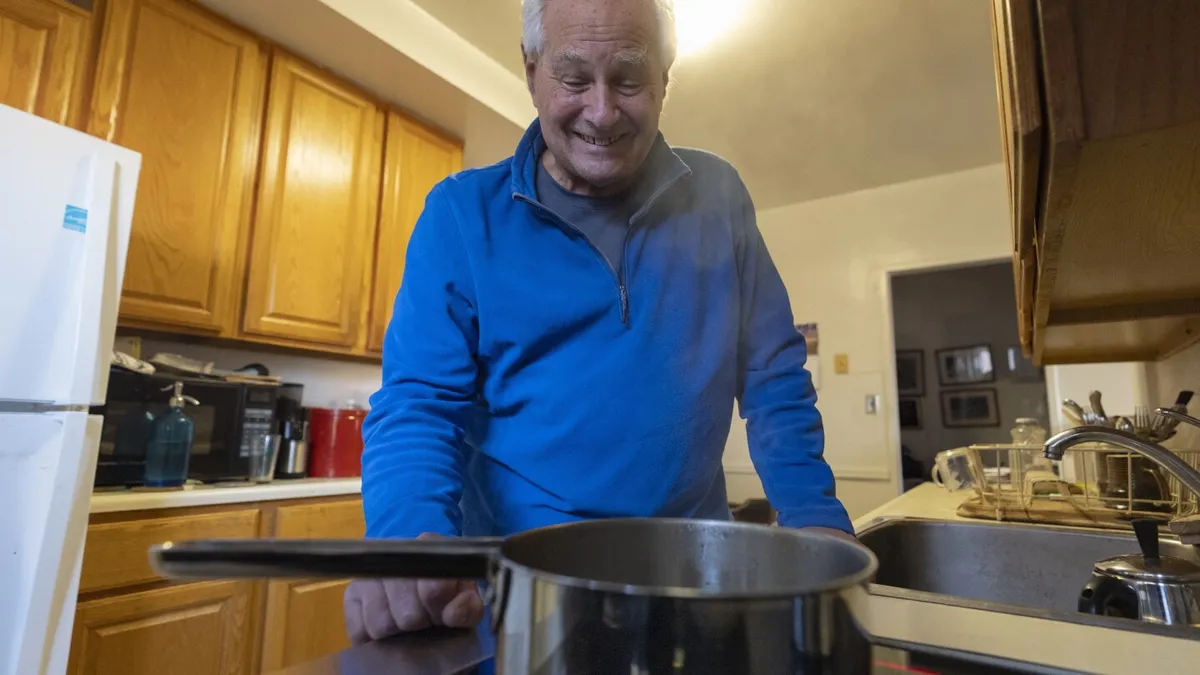
For many years, Ed Yaker, the treasurer of a New York City co-op housing nearly 1,500 units, has faced significant issues with gas leaks. These leaks can result in entire buildings losing access to gas, leaving residents unable to cook for months while awaiting costly repairs to the gas lines. Therefore, when Yaker discovered Copper, a California startup producing an innovative electric stove and oven that can simply be plugged into a standard outlet, he was eager to make the switch.
The sleek, four-burner electric induction stove operates on 120 volts, eliminating the need for extensive rewiring, which many traditional electric stoves require. This not only saves considerable money but also simplifies installation. “In terms of, ‘Is this the way to go?’ It’s a no-brainer,” Yaker stated, demonstrating how a quart of water boiled in just two minutes. His apartment, adorned with books on energy and climate change, reflects his commitment to energy efficiency.
Switching to electric cooking offers significant health benefits. Approximately 47 million Americans currently rely on gas stoves, which emit harmful pollutants such as nitrogen dioxide and cancer-causing benzene. According to Rob Jackson, an environmental scientist at Stanford University and a lead author of a study on pollution from gas cooking, “You wouldn’t stand over the tailpipe of a car breathing in the exhaust from that car. And yet nearly 50 million households stand over a gas stove, breathing the same pollutants in their homes.” Jackson, who previously used a gas stove, noted that observing pollutant levels rise immediately when using gas prompted him to switch to an electric model.
Moreover, induction stoves play a critical role in combating climate change stemming from residential emissions related to cooking, heating, and cooling. Gas stoves are notoriously inefficient, with about half of the heat generated escaping into the room. In contrast, electric stoves can achieve up to 80% efficiency, while induction models can reach up to 90% efficiency by heating only where the pot makes contact with the surface.
Even when not in use, gas stoves contribute to greenhouse gas emissions. Jackson's research found that gas stoves leak methane, the primary component of natural gas, due to loose fittings and connections. It is estimated that the climate impact of these leaky stoves in U.S. homes is comparable to the carbon emissions produced by 500,000 gasoline-powered cars.
The new Copper stoves are equipped with a smart battery that can charge during off-peak electrical rates, allowing users to cook without incurring high costs. However, these advanced electric stoves come with a higher price tag. Early adopters are leveraging government incentives to offset the cost. Yaker, who has a background in teaching and saving, initially paid $6,000 for his stove, but a federal tax credit for clean energy appliances reduced the price to $4,200. Copper has now partnered with the New York City Housing Authority to provide 10,000 stoves at a maximum price of $3,200 each, expected to be delivered in 2026.
In California, Eden Housing has retrofitted one of its apartment buildings with Copper stoves, utilizing state and local programs to facilitate the transition. “It’s pretty cool, it looks nice and it’s easy to clean,” said Jolene Cardoza, who appreciates the new appliance. Her daughter’s asthma was previously aggravated by the old gas stove, and she is relieved that the Copper model does not release harmful pollutants.
While many tenants have embraced the switch to induction cooking, some have experienced challenges. Monica Moore expressed her dissatisfaction, stating, “I don’t really like the way it cooks my food in the oven.” Although she acknowledges the speed at which water boils, she misses cooking with an open flame and finds it inconvenient to replace her cookware with induction-compatible options.
For experts like Jackson, shifting away from gas is crucial for environmental sustainability. “I think shutting the gas off to our homes and electrifying our homes is one of the best things we can control individually to reduce our personal greenhouse gas emissions,” he emphasized. He identifies cars and homes as two primary areas where individuals can effectively lower their greenhouse gas footprint.